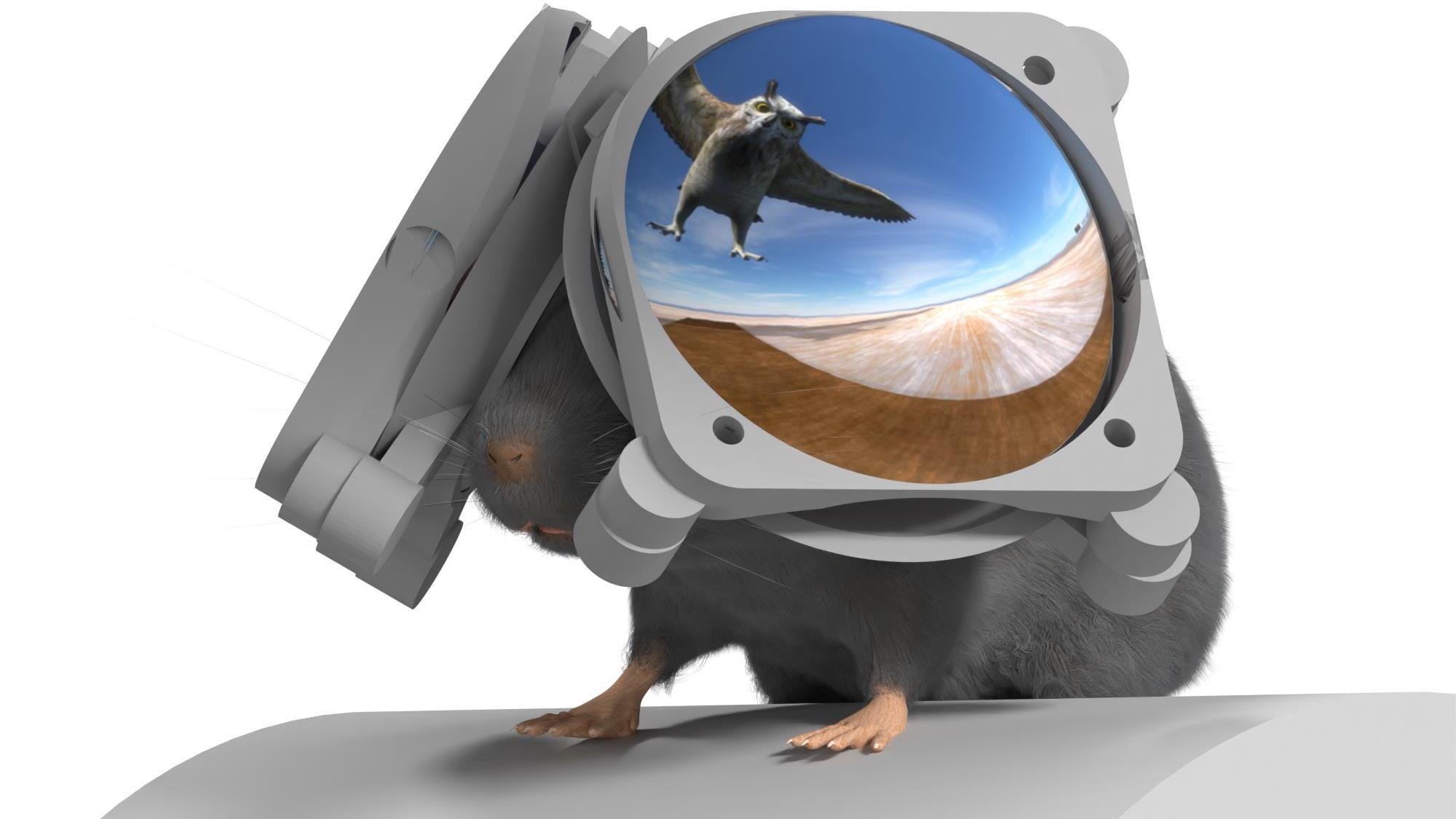Getting mice to pay attention to two-dimensional screen projections of simulated surroundings can be tricky due to their tendency to notice the external lab settings around them. In a bid to get mice to focus on the experiment at hand, a team of researchers have built their own virtual reality headset sized for a mouse.

As detailed in a new study published Friday in the journal Neuron, a team of engineers at Northwestern University recently designed a VR device for mouse test subjects. By projecting potentially more realistic, immersive, natural surroundings, the team believes researchers are already able to more intricately analyze and study the rodents’ neural activity.
According to Daniel Domeck, the paper’s senior author and an associate professor at Northwestern’s school of neurobiology, researchers have used the same “VR arrays” for the past 15 years to approximate outdoor environments and other experiment settings. But even these advanced lab simulation systems for mice ostensibly only amount to surrounding the animals with computer or projection screens. In these environments, mice will often notice the exterior laboratory space, as well as the flat screens’ two-dimensional imaging.
In Northwestern’s December 8 announcement, Dombeck explained that while the 2D arrays can get the job done, “the animals aren’t as immersed as they would be in a real environment.” He continued, “it takes a lot of training just to get the mice to pay attention to the screens and ignore the lab around them.”
[Related: What’s the difference between VR, AR, and mixed reality?]
Dombeck compares this to watching a TV show while sitting on your living couch. VR Goggles like Meta Quest, however, occupy your full visual field, while separate projections for each eye create a sense of depth.
“That’s been missing for mice,” explained Dombeck. Enter: The Miniature Rodent Stereo Illumination VR, aka iMRSIV. Harnessing recent hardware miniaturization advancements, Dombeck and his collaborators combined bespoke lenses alongside tiny OLED displays custom-fit for a mouse. Each lens offers a 180-degree field-of-view that, when combined, shuts out any real world visual interferences.
Perhaps predictably, goggles on mice is easier said than done, so Dombeck’s team avoided it altogether. Instead, they designed a harness to suspend iMRSIV in just the right position in front of a mouse’s face. The mouse then runs on a treadmill to simulate movement within their VR surroundings with iMRSIV remaining static. Analyzing mouse brain mapping scans as they wore iMRSIV goggles already show promise for the new simulation alternative. Not only did their brains activate in ways much as they would in a natural environment, but the mice also engaged with their VR surroundings more quickly than during the standard 2D screen setups.
[Related: Here’s a look at Apple’s first augmented reality headset.]
“They knew where to run and looked to the right places for rewards,” Dombeck said of the mice VR experience. “We think they actually might not need as much training because they can engage with the environment in a more natural way.”
iMRSIV’s design and immersion capabilities mean that, for the first time, researchers were able to use VR to simulate an overhead threat. In this case, a dark disc shape expanded “above” the mice, prompting them to scurry faster or freeze in place—both common mouse responses in such situations. The team could then capture the test animals’ neural patterns in detail.
Given their many similarities, rodent brains are often used as stand-ins for human neurobiology research. Dombeck’s team believes that iMRSIV could allow for greater research into the effects of VR exposure on users’ brains, as well as their ability to adapt to the technology. As for the mice, don’t worry—they’ll get their day on top of the food chain, at least virtually.
“In the future, we’d like to look at situations where the mouse isn’t prey but is the predator,” John Issa, a postdoctoral fellow in Dombeck’s lab and a study co-first author, said in Friday’s announcement. “We could watch brain activity while it chases a fly, for example. That activity involves a lot of depth perception and estimating distances. Those are things that we can start to capture.”





